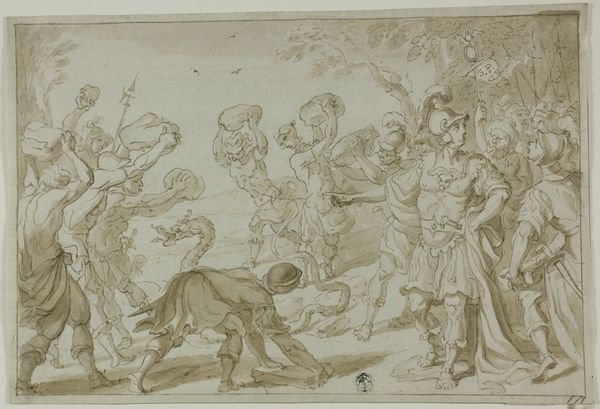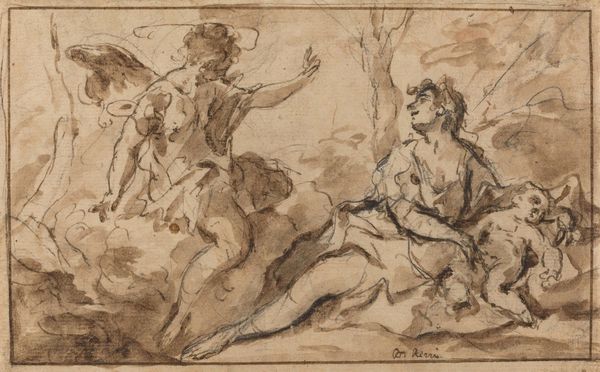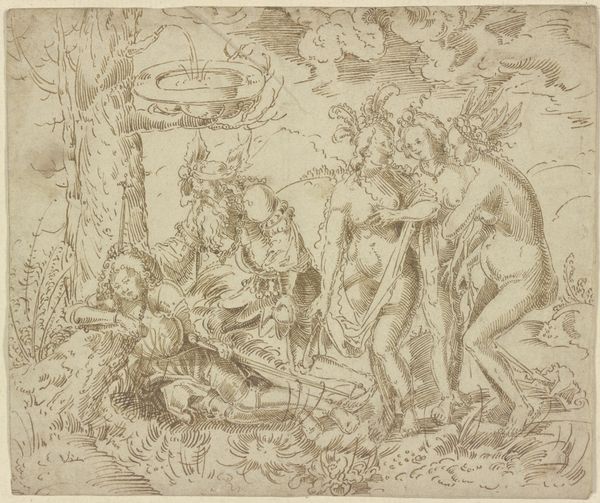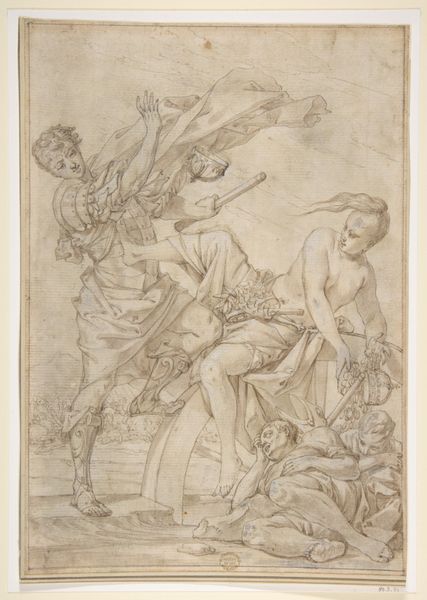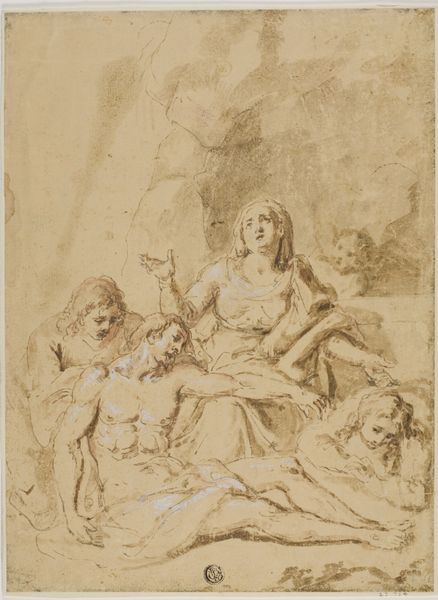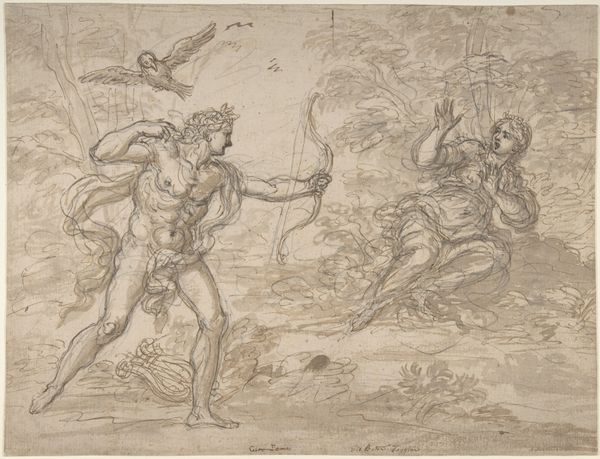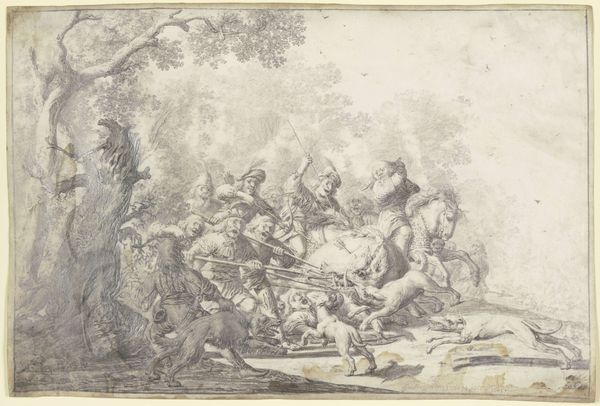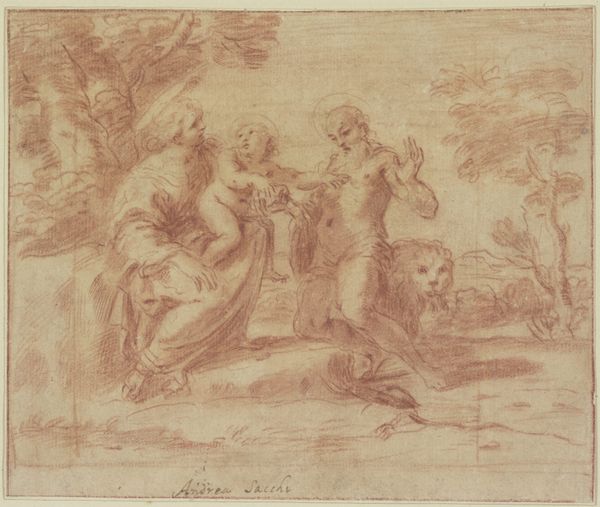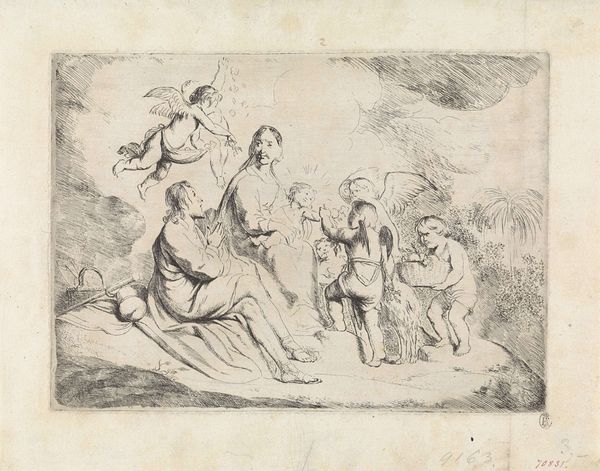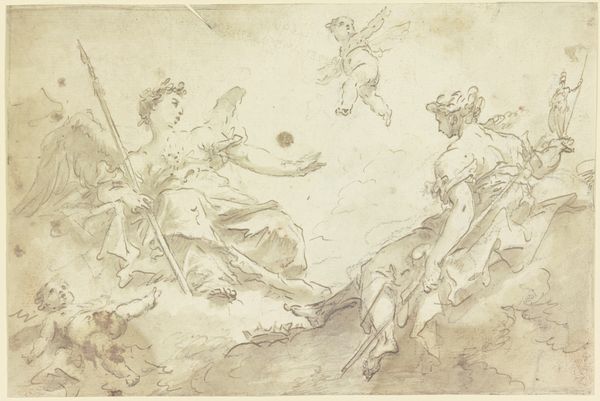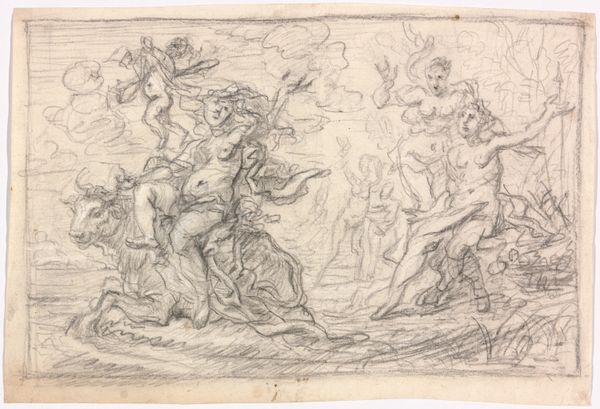
The Rape of Helena; verso: Study of a Kneeling Nude Male Figure 1647 - 1705
0:00
0:00
drawing, paper, ink
#
drawing
#
narrative-art
#
baroque
#
classical-realism
#
figuration
#
paper
#
female-nude
#
ink
#
men
#
history-painting
#
male-nude
Dimensions: sheet: 10 3/8 x 15 3/16 in. (26.4 x 38.5 cm)
Copyright: Public Domain
Editor: So, here we have Daniel Seiter's "The Rape of Helena," dating roughly between 1647 and 1705. It’s an ink drawing on paper. What strikes me is the dramatic, almost theatrical quality, even in this preparatory sketch. What do you see in this piece? Curator: Beyond the immediate drama, I see layers of cultural memory embedded in the scene. The "rape" of Helena, as the abduction is traditionally termed, is a pivotal moment leading to the Trojan War. It represents not just a physical act but a clash of civilizations, a disruption of cosmic order. It’s fascinating how Seiter uses classical realism to depict such a volatile narrative. What do you make of the figures, their poses? Editor: Well, the male figure pulling Helena from the boat definitely commands attention. There's an urgency in his gesture, but I also see a degree of vulnerability in Helena's expression. And what about that figure in the upper right riding the chariot? Is that another symbolic representation? Curator: Precisely! That could be a veiled reference to Venus, perhaps complicit or even orchestrating this event, playing on the complex themes of desire, fate, and divine intervention. Symbols aren’t always straightforward; their power lies in their layered meanings that cultures continually reinterpret. Does that reading shift your initial perception? Editor: Absolutely. Knowing that, I now see a deeper level of interpretation – the abduction isn't just a historical event but also a symbolic one, weighted with historical and psychological consequences, and, strangely, an almost sanctioned violence by Venus, god of love. Curator: Exactly. The continuity of these classical narratives lies in their potent symbols, shaping how we understand power, beauty, and conflict, generation after generation. Editor: It’s amazing how a simple ink drawing can hold so much weight and symbolic power. I will think twice when I next consider the idea of 'cultural memory' too! Curator: Indeed! It's a journey through art, revealing the enduring language of symbols and their lasting relevance.
Comments
No comments
Be the first to comment and join the conversation on the ultimate creative platform.
